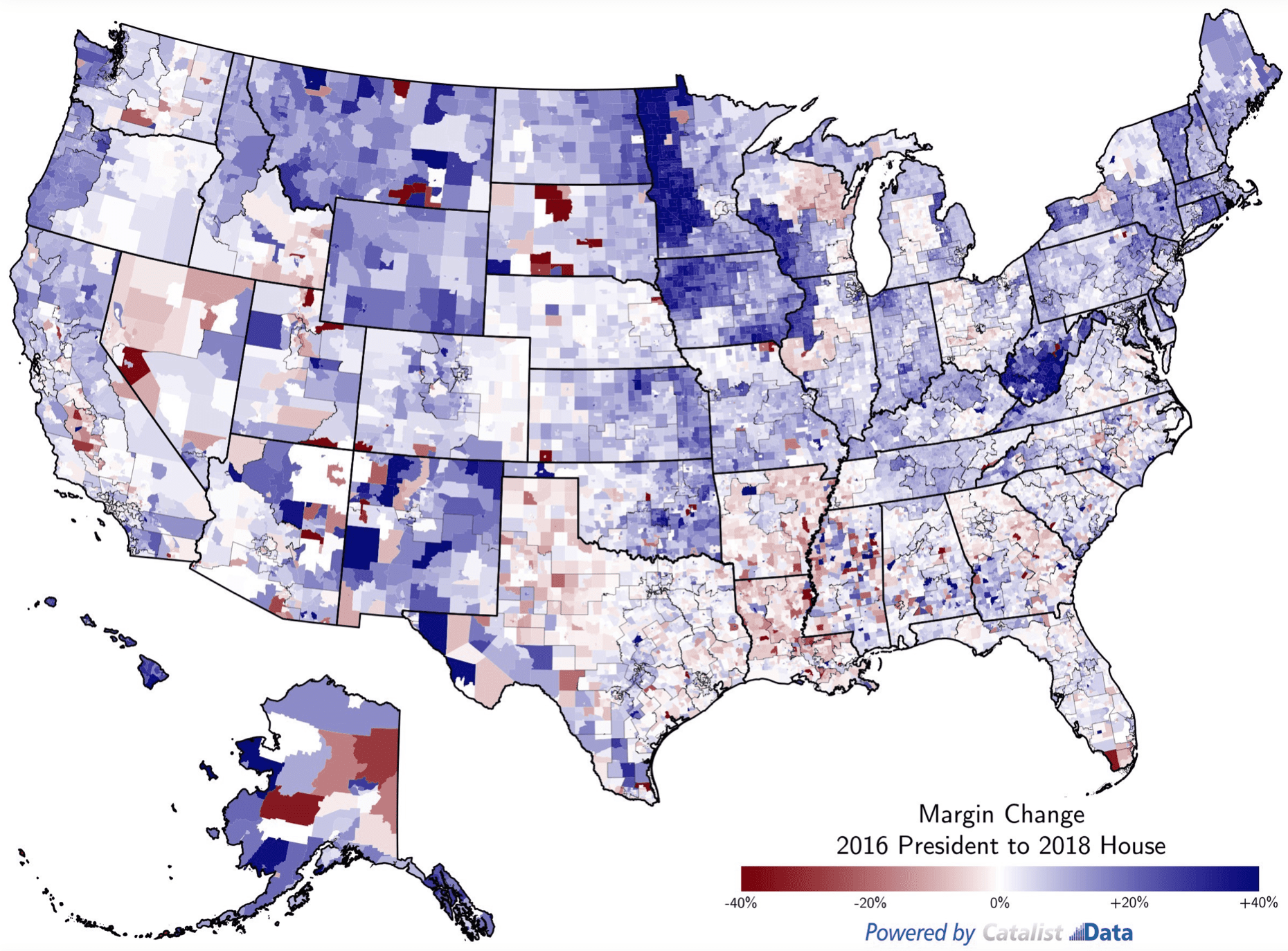Yair writes:
Immediately following the 2018 election, we published an analysis of demographic voting patterns, showing our best estimates of what happened in the election and putting it into context compared to 2016 and 2014. . . .
Since then, we’ve collected much more data — precinct results from more states and, importantly, individual-level vote history records from Secretaries of State around the country. This analysis updates the earlier work and adds to it in a number of ways. Most of the results we showed remain the same as in the earlier analysis, but there are some changes.
Here’s the focus:
How much of the change from 2016 was due to different people voting vs. the same people changing their vote choice?
I like how he puts this. Not “Different Electorate or Different Vote Choice?” which would imply that it’s one or the other, but “How much,” which is a more quantitative, continuous, statistical way of thinking about the question.
Here’s Yair’s discussion:
As different years bring different election results, many people have debated the extent to which these changes are driven by (a) differential turnout or (b) changing vote choice.
Those who believe turnout is the driver point to various pieces of evidence. Rates of geographic ticket splitting have declined over time as elections have become more nationalized. Self-reported consistency between party identification and vote choice is incredibly high. In the increasingly nasty discourse between people who are involved in day-to-day national politics, it is hard to imagine there are many swing voters left. . . .
Those who think changing vote choice is important point to different sets of evidence. Geographic ticket splitting has declined, but not down to zero, and rates of ticket splitting only reflect levels of geographic consistency anyway. Surveys do show consistency, but again not 100% consistency, and survey respondents are more likely to be heavily interested in politics, more ideologically consistent, and less likely to swing back and forth. . . . there is little evidence that this extends to the general public writ large. . . .
How to sort through it all?
Yair answers his own question:
Our voter registration database keeps track of who voted in different elections, and our statistical models used in this analysis provide estimates of how different people voted in the different elections. . . .
Let’s build intuition about our approach by looking at a fairly simple case: the change between 2012 and 2014 . . . likely mostly due to differential turnout.
What about the change from 2016 to 2018? The same calculations from earlier are shown in the graph above and tell a different story. . . .
Two things happened between 2016 and 2018. First, there was a massive turnout boost that favored Democrats, at least compared to past midterms. . . . But if turnout was the only factor, then Democrats would not have seen nearly the gains that they ended up seeing. Changing vote choice accounted for a +4.5% margin change, out of the +5.0% margin change that was seen overall — a big piece of Democratic victory was due to 2016 Trump voters turning around and voting for Democrats in 2018.
Also lots more graphs, including discussion of some individual state-level races. And this summary:
First, on turnout: there are few signs that the overwhelming enthusiasm of 2018 is slowing down. 2018 turnout reached 51% of the citizen voting-age population, 14 points higher than 2014. 2016 turnout was 61%. If enthusiasm continues, how high can it get? . . . turnout could easily reach 155 to 160 million votes . . .
Second, on vote choice . . . While 2018 was an important victory for Democrats, the gains that were made could very well bounce back to Donald Trump in 2020.
You can compare this to our immediate post-election summary and Yair’s post-election analysis from last November.
(In the old days I would’ve crossposted all of this on the Monkey Cage, but they don’t like crossposting anymore.)



really interesting. Thanks